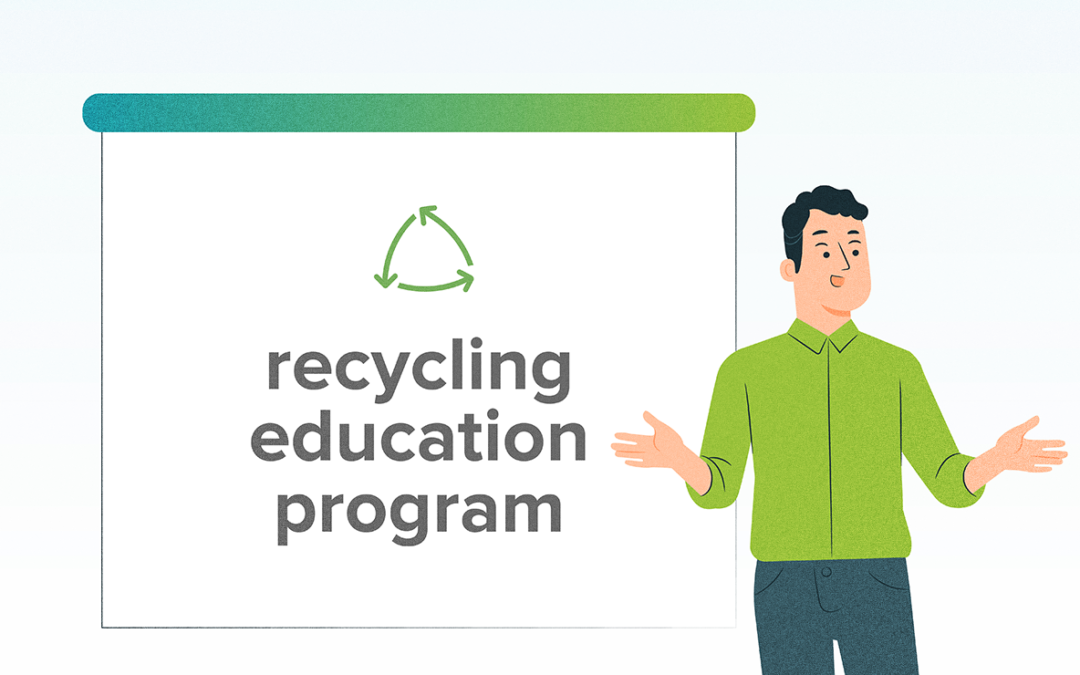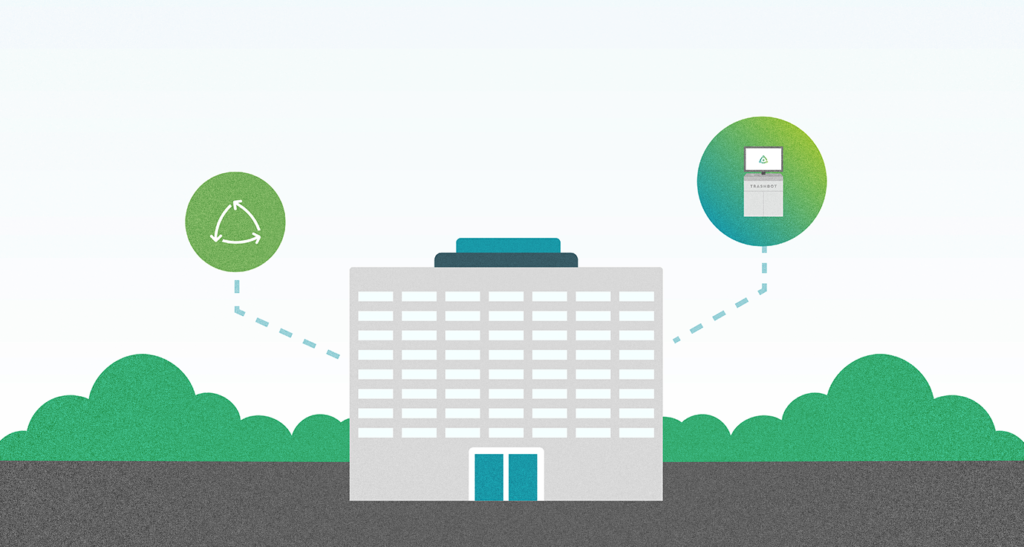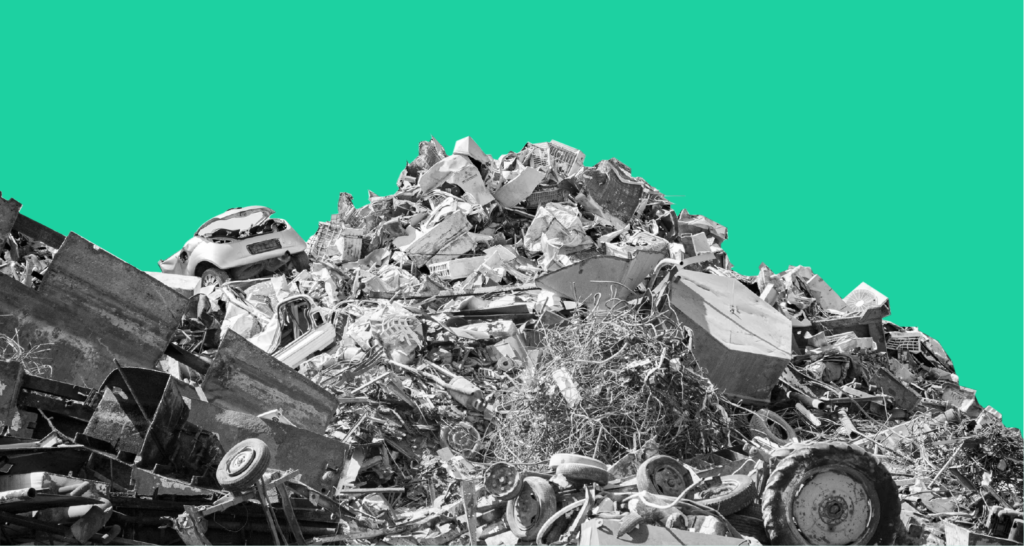
6 Things You Should Know Before Starting a Recycling Education Program
Despite current efforts to get the public educated on recycling, not much is implemented in real life. According to EPA, 292.4 million tons of solid waste were produced in 2018 in the USA, meaning that each person produced 4.9 pounds of municipal solid waste every day. Contributing to a better world through sustainability programs should be a priority in any public space. Nevertheless, the recycling and composting aspects are often ignored, especially in large facilities. Public spaces have a greater since airports, hospitals, and stadiums often have the biggest challenge getting their visitors to recycle correctly.
The ultimate Zero Waste goal is to reduce everyday waste through recycling and waste diversion efforts. Moreover, composting techniques can also help in decarbonization. Therefore, facility leaders should start introducing a Zero Waste vision by introducing recycling education programs.
Recycling programs will help the earth in breathing in a better way. According to RTS, recycling one single aluminum tin can supply power to television for 3 hours. Nevertheless, public facility users are not aware of recycling dos and dont’s; an accessible recycling education to all and convenience to the public can help minimize waste landfills and ensure recycling ROI. This article is the first step to getting you well-versed in recycling and developing an effective recycling education program.
1. Why is recycling education so important?
Recycling education is important for any public space and workplace as it would help the reducing a company’s environmental impact and make this world a better place for the next generations.
Typically, people have a general idea about recycling, but despite their best intentions, recycling rules can be confusing, especially in public spaces where people are in a hurry and discard their waste without a second thought. Nonetheless, recycling education directly helps decarbonize and control climate change by reducing waste and applying waste diversion strategies.

2. The cost of waste: Why to invest in recycling education
Nobody can neglect the importance of recycling education, but people usually have limited knowledge about recycling and they end up strangled in the wish cycle. Therefore, recycling education should be spread accurately in your facility. Companies can benefit from investing in recycling education, such as being perceived as an environmental innovator, reducing the cost of waste management, developing a better perception from customers, getting a return on investment in recycling, and a sustainable green environment.
3. The 5 principles of recycling in the workplace
Recycling education is incomplete without 5 principles: reduce, reuse, repair, rot and recycle. Recycling education is not only about recycling the waste but also about not creating or minimizing the waste through different techniques.
Reduce: Don’t create waste unless necessary, for example, switching to a smart recycling bin with fullness indication so your custodial team uses just the necessary trash bags.
Reuse: Reusable items should be used before disposing of or recycling them. Get your maintenance team to improve the lifetime of your facility’s equipment and assets.
Repair: Repair items instead of disposing of them or buying new ones. This way, expenses will be decreased, and no more waste will be generated.
Rot: Your facility’s top waste items can be switched for compostable and eco-friendly alternatives. Public spaces will be greener, and landfill waste can be drastically reduced through this initiative.
Recycle: The key to separating recyclables from landfill waste is an effective waste diversion. Usually, less than 35% of the waste ends up being recycled, but with new recycling technologies such as TrashBot, on-site sorting can be 300% more accurate than just relying on your public’s judgment.
These recycling principles require leaders to launch recycling education programs for people who want to understand the true meaning of recycling education. Recycling education programs will modify the living styles of the attendants, and they will be aware of how to practice recycling even in public spaces.

4. The impact of a Recycling Education Program
Did you know coffee cups are not recyclable? Most people don’t, and in one year Americans use 50 billion coffee cups per year. Educational programs play a huge part in effective recycling as recycling rules are complex and vary based on location, which results in user confusion when throwing items away. In facilities with transient populations, this leads to large-scale contamination, low recycling yields, and poor diversion.
The goal of a Recycling Education Program is to get the user involved in recycling while eliminating the thinking of wish-cycling. Moreover, the user understands how a simple aluminum can help improve the whole ecosystem.
5. Recycling education program’s importance
Yes, recycling education programs may require a significant investment, but the impact these programs cause on attendants is ever-lasting. The Return on Investment (ROI) on recycling education programs can help companies change their recycling behavior. Meaning that companies can benefit from a variety of sources such as buying recycled products reducing the cost, selling used or refurbished products profits the companies, and more importantly, recycling businesses would flourish and can help in meeting recycling commitments.
Moreover, recycling education programs help reduce the cost of disposing of waste and lower the contamination rates by gaining knowledge about recyclables and compostables. Through new recycling technologies such as Trashbot, companies are able to get on-demand waste audits, fullness indication alerts, and waste diversion analytics.

6. Do it for the Earth
The unawareness of recycling education has caused many devastating impacts on the climate change. Today, most recycling bins’ contents end up in landfills since people are still uncertain when depositing an item in a recycling bin. Recycling education programs should be developed, implemented, and evaluated to generate a substantial environmental impact.




